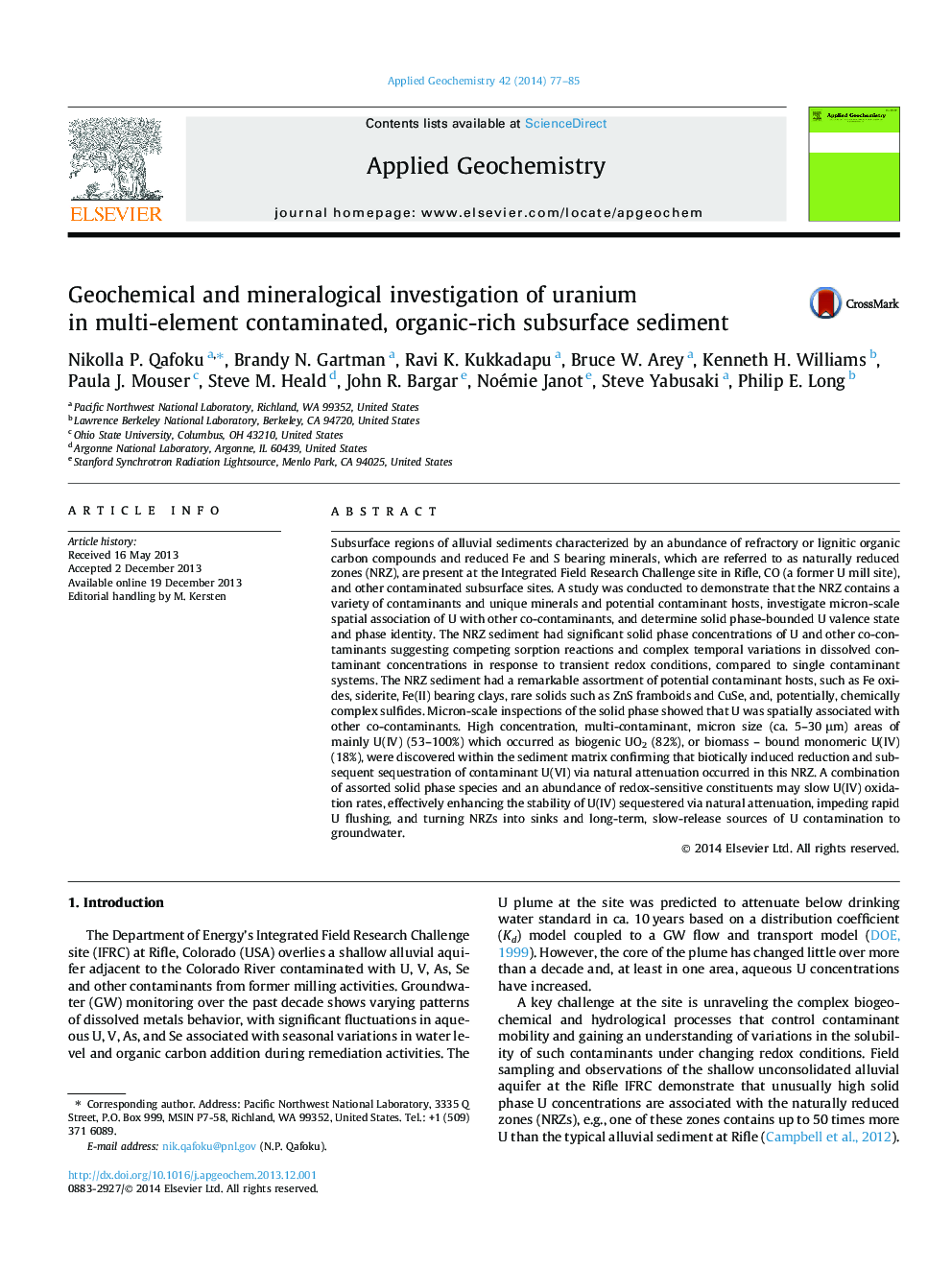| Article ID | Journal | Published Year | Pages | File Type |
|---|---|---|---|---|
| 6335283 | Applied Geochemistry | 2014 | 9 Pages |
Abstract
Subsurface regions of alluvial sediments characterized by an abundance of refractory or lignitic organic carbon compounds and reduced Fe and S bearing minerals, which are referred to as naturally reduced zones (NRZ), are present at the Integrated Field Research Challenge site in Rifle, CO (a former U mill site), and other contaminated subsurface sites. A study was conducted to demonstrate that the NRZ contains a variety of contaminants and unique minerals and potential contaminant hosts, investigate micron-scale spatial association of U with other co-contaminants, and determine solid phase-bounded U valence state and phase identity. The NRZ sediment had significant solid phase concentrations of U and other co-contaminants suggesting competing sorption reactions and complex temporal variations in dissolved contaminant concentrations in response to transient redox conditions, compared to single contaminant systems. The NRZ sediment had a remarkable assortment of potential contaminant hosts, such as Fe oxides, siderite, Fe(II) bearing clays, rare solids such as ZnS framboids and CuSe, and, potentially, chemically complex sulfides. Micron-scale inspections of the solid phase showed that U was spatially associated with other co-contaminants. High concentration, multi-contaminant, micron size (ca. 5-30 μm) areas of mainly U(IV) (53-100%) which occurred as biogenic UO2 (82%), or biomass - bound monomeric U(IV) (18%), were discovered within the sediment matrix confirming that biotically induced reduction and subsequent sequestration of contaminant U(VI) via natural attenuation occurred in this NRZ. A combination of assorted solid phase species and an abundance of redox-sensitive constituents may slow U(IV) oxidation rates, effectively enhancing the stability of U(IV) sequestered via natural attenuation, impeding rapid U flushing, and turning NRZs into sinks and long-term, slow-release sources of U contamination to groundwater.
Related Topics
Physical Sciences and Engineering
Earth and Planetary Sciences
Geochemistry and Petrology
Authors
Nikolla P. Qafoku, Brandy N. Gartman, Ravi K. Kukkadapu, Bruce W. Arey, Kenneth H. Williams, Paula J. Mouser, Steve M. Heald, John R. Bargar, Noémie Janot, Steve Yabusaki, Philip E. Long,
